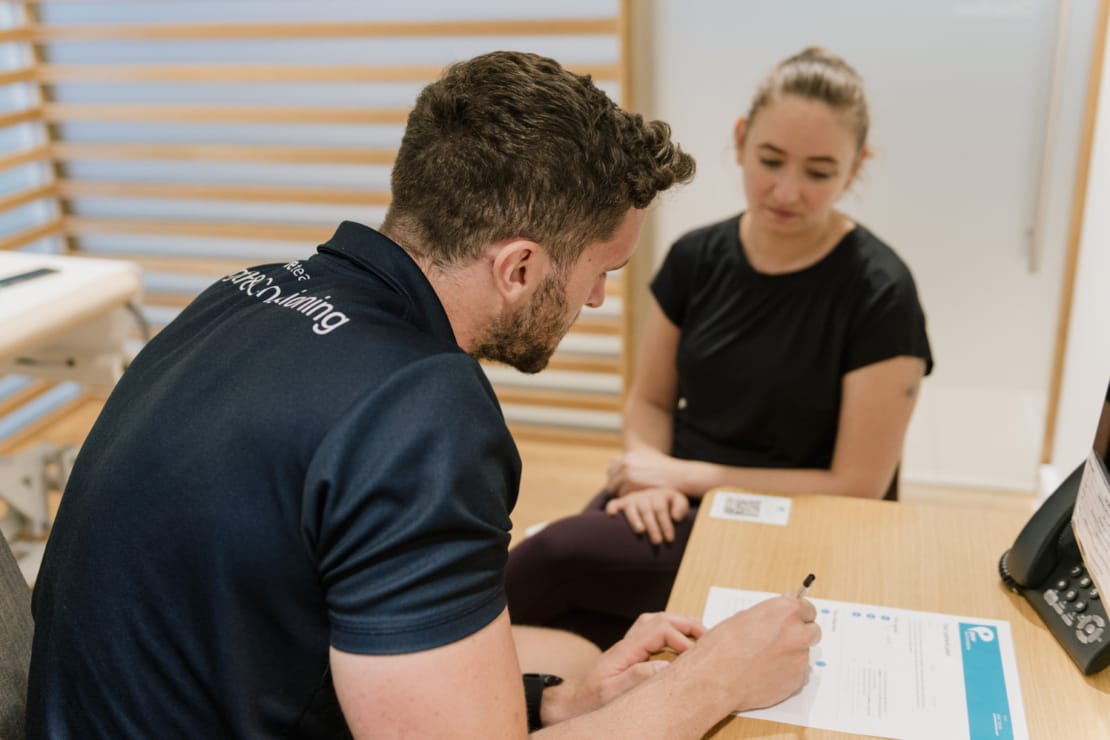Understanding Pelvic Organ Prolapse & Treatments

Pure Sports Medicine
- 20 June, 2024
- Women's Health
- 3 min read
Pelvic Organ Prolapse (POP) is a condition that may not be widely discussed but affects a significant number of women worldwide.

It occurs when the pelvic organs, such as the bladder, uterus, and rectum, begin to prolapse, or drop, into the vagina due to the weakening of the muscles and tissues supporting them. This can lead to discomfort, a feeling of pressure or fullness in the pelvic area, and other symptoms that can affect quality of life.
There are three main types of pelvic organ prolapse: cystocele (bladder prolapse), uterine prolapse, and rectocele (rectum prolapse). Each type refers to the specific organ that is encroaching upon the vaginal space, leading to varying symptoms and requiring different management strategies.
Identifying Risk Factors and Symptoms
Several factors can increase the risk of developing pelvic organ prolapse. Age is a significant risk factor, as the muscles and tissues supporting the pelvic organs can weaken over time. Parity, or the number of times a woman has given birth, also plays a role, with vaginal deliveries particularly increasing the risk due to the impact and strain on the pelvic floor. Symptoms of POP include a sensation of pressure or fullness in the pelvic area, which can often become more pronounced towards the end of the day or during activities that involve walking or physical impact. Additionally, a pulling or dragging feeling in the pelvic area is common, indicating the downward displacement of pelvic organs.
The Role of Pelvic Physiotherapy in Management
Pelvic physiotherapy is a cornerstone in the management of pelvic organ prolapse. Guided by the principle that strengthening the pelvic floor muscles can support the pelvic organs and alleviate symptoms, pelvic floor exercises have been shown to not only manage but in some cases, reduce the severity of prolapse. The National Institute for Health and Care Excellence (NICE) guidelines recommend a 16-week course of pelvic floor muscle training as the first line of treatment for POP. This non-surgical approach emphasises the importance of early intervention and the potential for physiotherapy to provide significant relief.
Exercise: A Path to Reducing Prolapse Severity
Exercise, specifically pelvic floor muscle training, plays a crucial role in both the management and potential reduction of prolapse severity. These exercises, often taught by a specialised physiotherapist, aim to strengthen the pelvic floor muscles, providing better support for the pelvic organs. Regular, consistent practice is essential for effectiveness, and many women experience noticeable improvement in their symptoms and quality of life as a result. This non-invasive approach is an empowering first step for those diagnosed with POP.
The Importance of Early Intervention and Lifestyle Adjustments
Early intervention is key in managing pelvic organ prolapse effectively. Recognising symptoms early and seeking professional advice can lead to a more successful management of the condition. Lifestyle adjustments also play a significant role in both prevention and management of POP. Weight management, for example, can alleviate excess pressure on the pelvic floor, while avoiding heavy lifting can prevent further strain. Additionally, for women experiencing menopause or postnatal changes, topical oestrogen may be recommended to help hydrate and strengthen pelvic tissues, further supporting prolapse management.
Advanced Treatment Options: Beyond Physiotherapy
While pelvic physiotherapy and lifestyle modifications are effective for many, some cases of pelvic organ prolapse may require additional interventions. Pessaries, devices inserted into the vagina to support the pelvic organs, offer a non-surgical option for those needing more assistance. For women for whom conservative measures are insufficient, surgical options are available to repair the prolapse and provide long-term relief. It’s important to discuss all available treatments with a healthcare provider to determine the most appropriate approach for each individual’s situation.
In conclusion, pelvic organ prolapse is a condition that can significantly affect a woman’s quality of life but is manageable with the right approach. Awareness, early intervention, and a comprehensive management plan that includes pelvic physiotherapy, lifestyle adjustments, and possibly medical or surgical treatments, can offer relief and improve outcomes for those affected. If you suspect you are experiencing symptoms of POP, reach out to a healthcare provider to discuss your options and take the first step towards recovery and improved wellbeing

Advice
Over the last 20+ years our experts have helped more than 100,000 patients, but we don’t stop there. We also like to share our knowledge and insight to help people lead healthier lives, and here you will find our extensive library of advice on a variety of topics to help you do the same.
OUR ADVICE HUBS See all Advice Hubs

